Finished up some 28mm British foot soldiers from
Conquest Miniatures last night, and took some pictures this evening before the light failed:
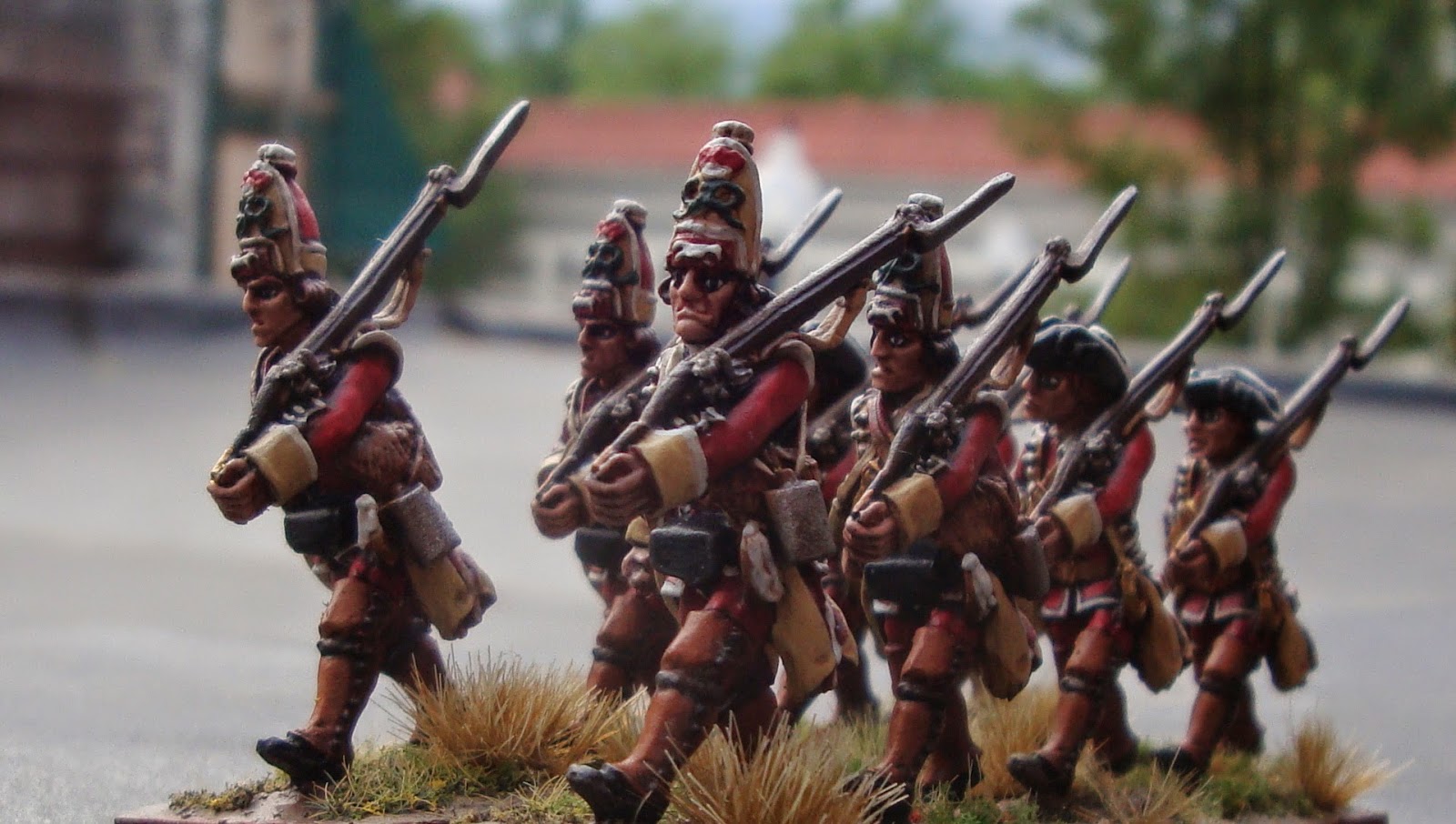 |
| Fig. 1 British Grenadiers and 'hatmen' of the SYW/FIW |
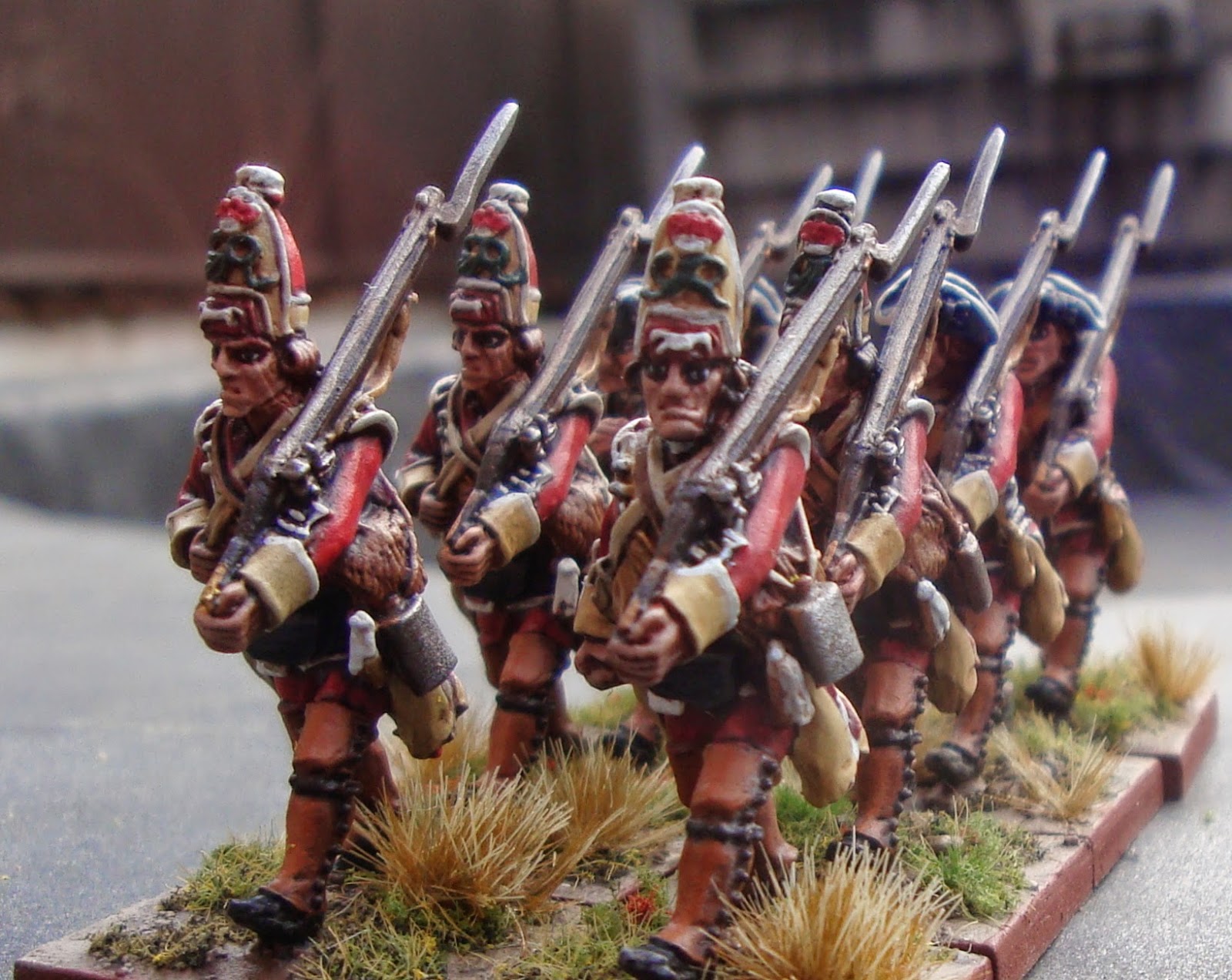 |
| Fig. 2 The Conquest figures have a lot of detail and animation, and were fun to paint. Instead of the usual "march attack" pose typical of horse and musket figures, these fellows seem to be marching up a dusty road, sweating under the load of knapsacks, haversacks, muskets, cartridges, canteens, and all manner of baggage. |
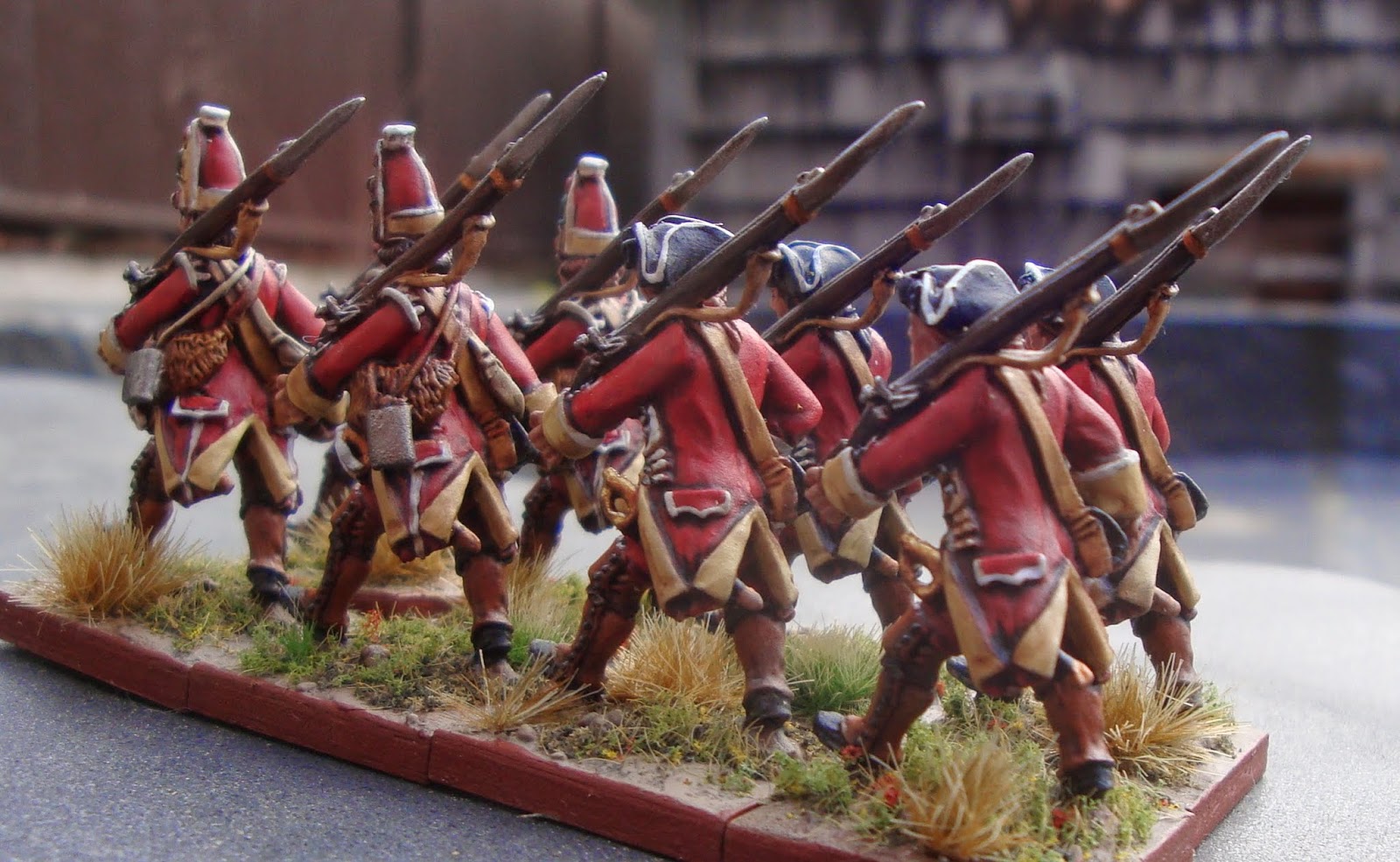 |
| Fig. 3 The hatmen are more lightly-burdened... did they leave their haversacks in camp? |
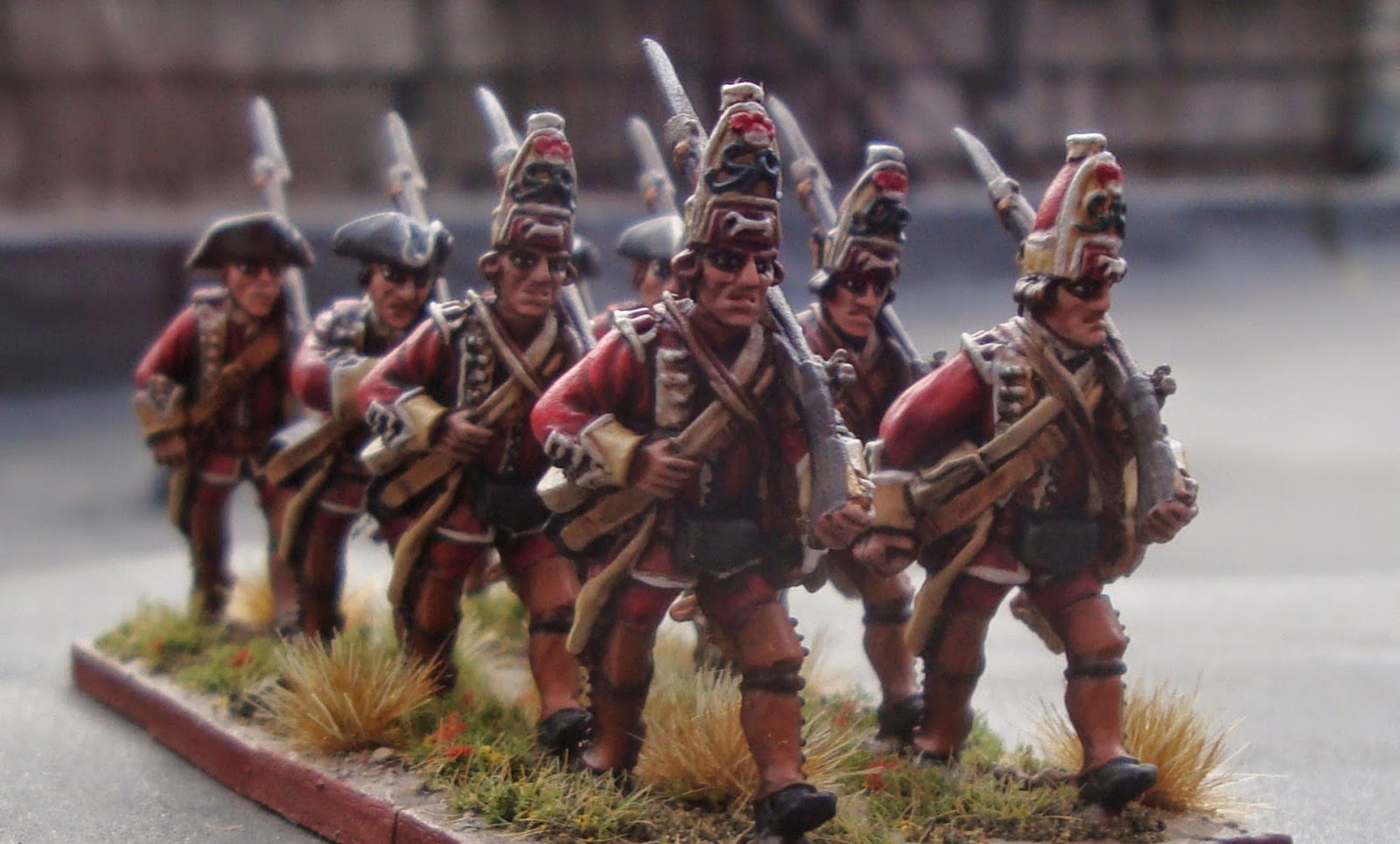 |
| Fig. 4 On the fronts of the mitre caps are a green GR ("Georgis Rex") of the 40th regiment of foot and the white horse of Hanover. Monogrammed hats... sort of like having a big "Dolce and Gabbana" logo... |
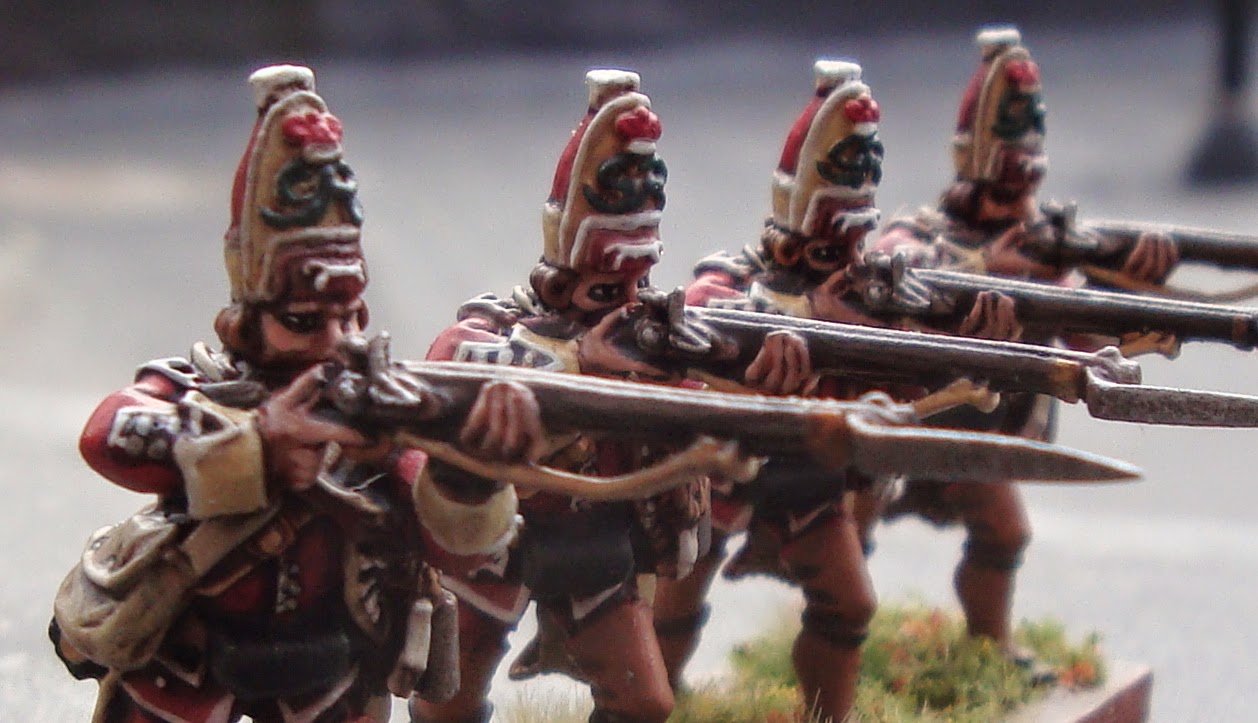 |
| Fig.5 "Present!" |
 |
| Fig. 6: 3mm plywood bases from Litko, flocking and all paint used from the Toy Soldier. |
 |
| Fig. 7 Conquest makes two poses, the "road marchers" and the "firers." They can rank up together, but it would look better if the rear rank was standing still, or loading or something. |
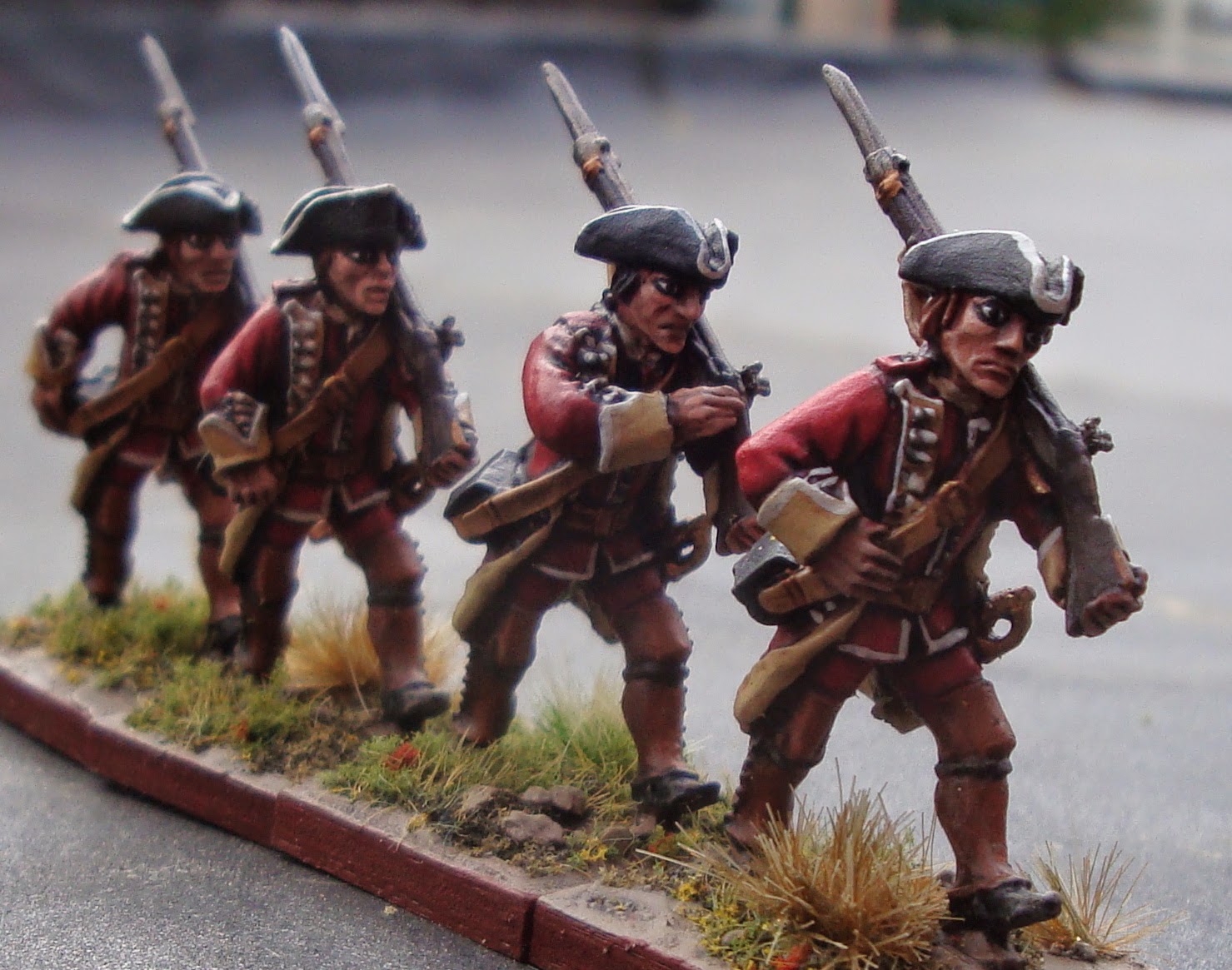 |
| Fig. 8 Hatmen. The Conquest figures are sculpted in four variations per pose, which give a nice sense of individuality. |
 |
| Fig. 9 The third from the left looks a bit nervous. |
 |
| Fig. 10 Almost like Beaker. "What was I thinking taking those 40 shillings? I could get killed here." |
 |
| Fig. 11 |
